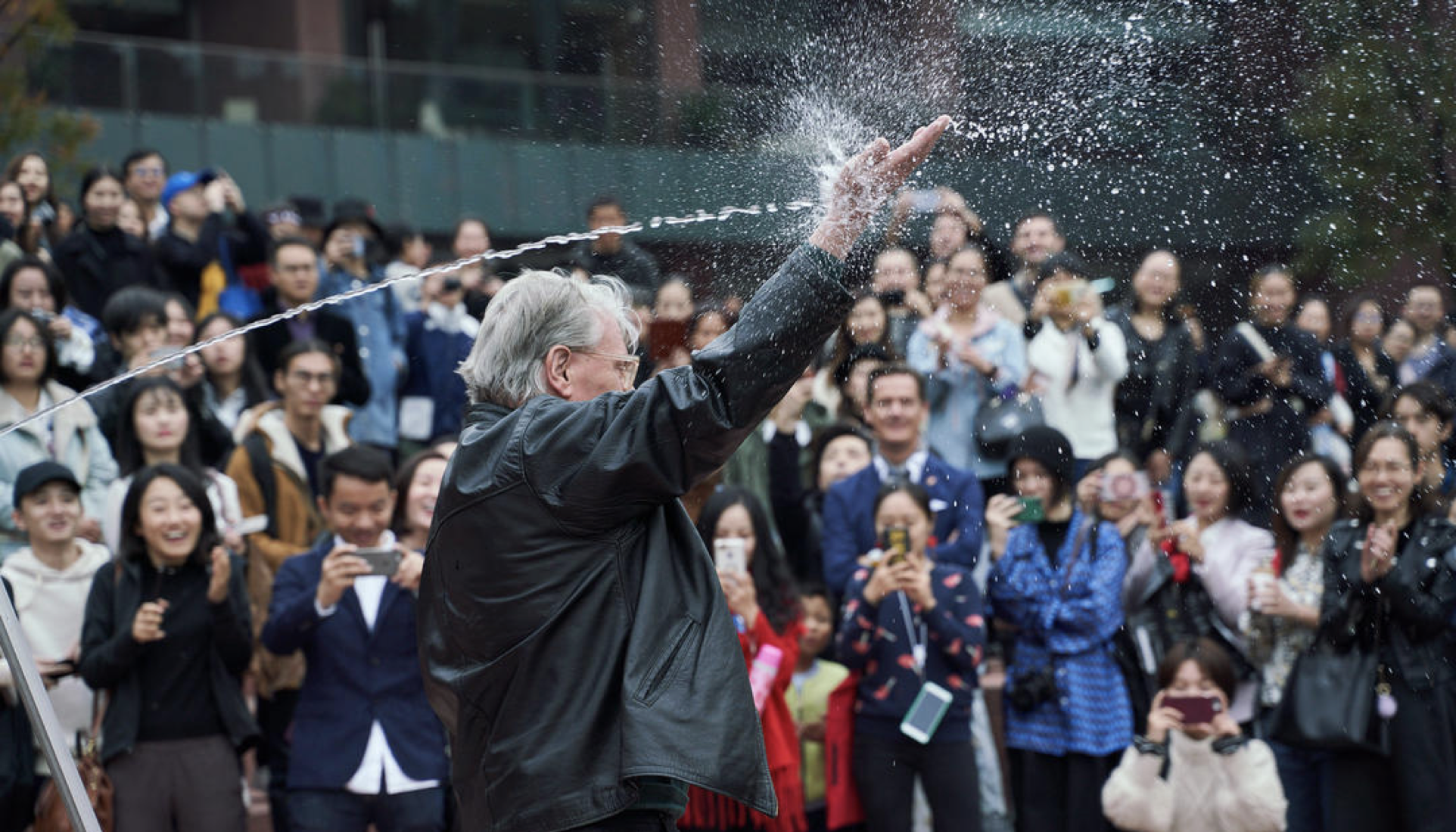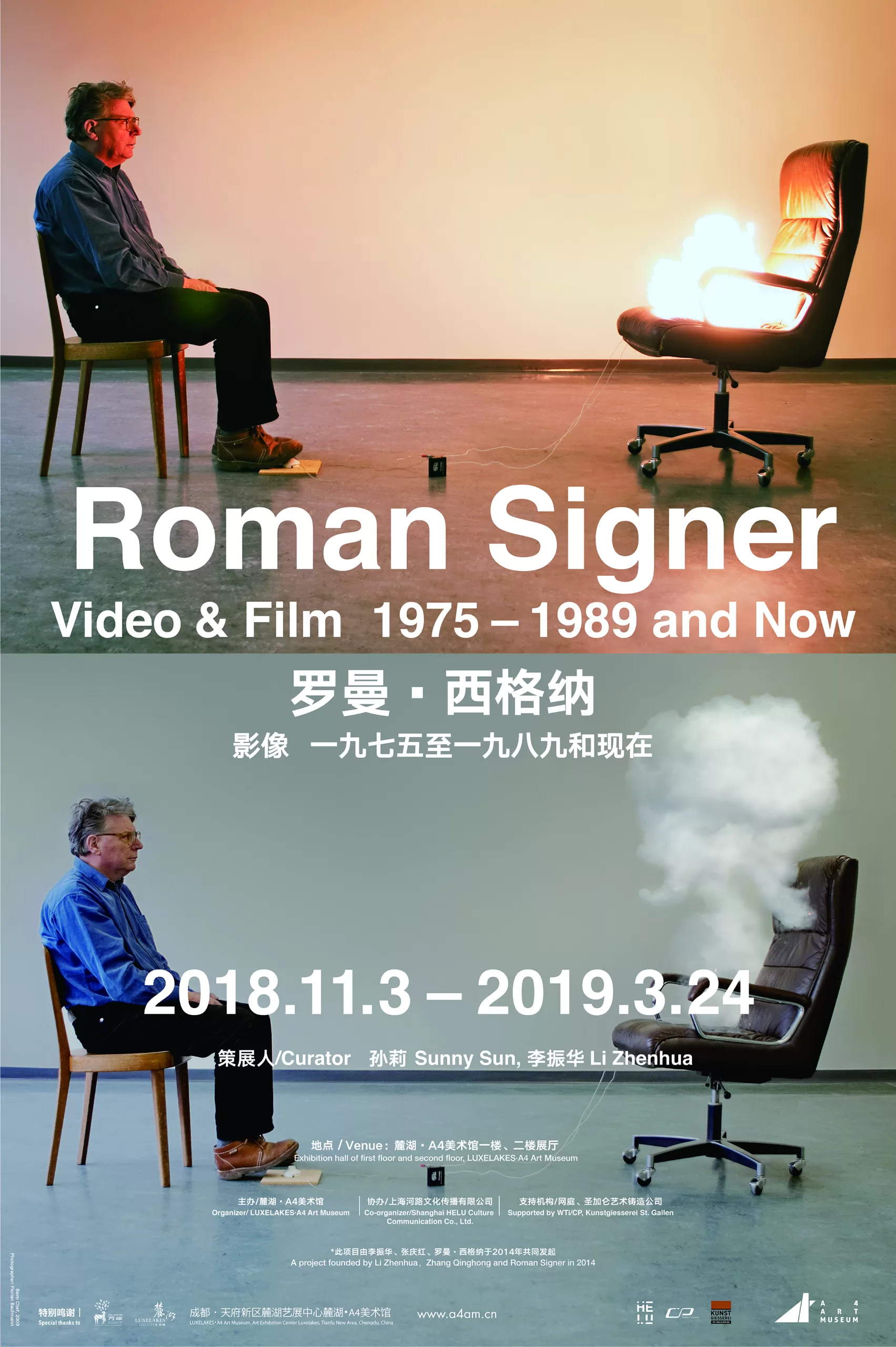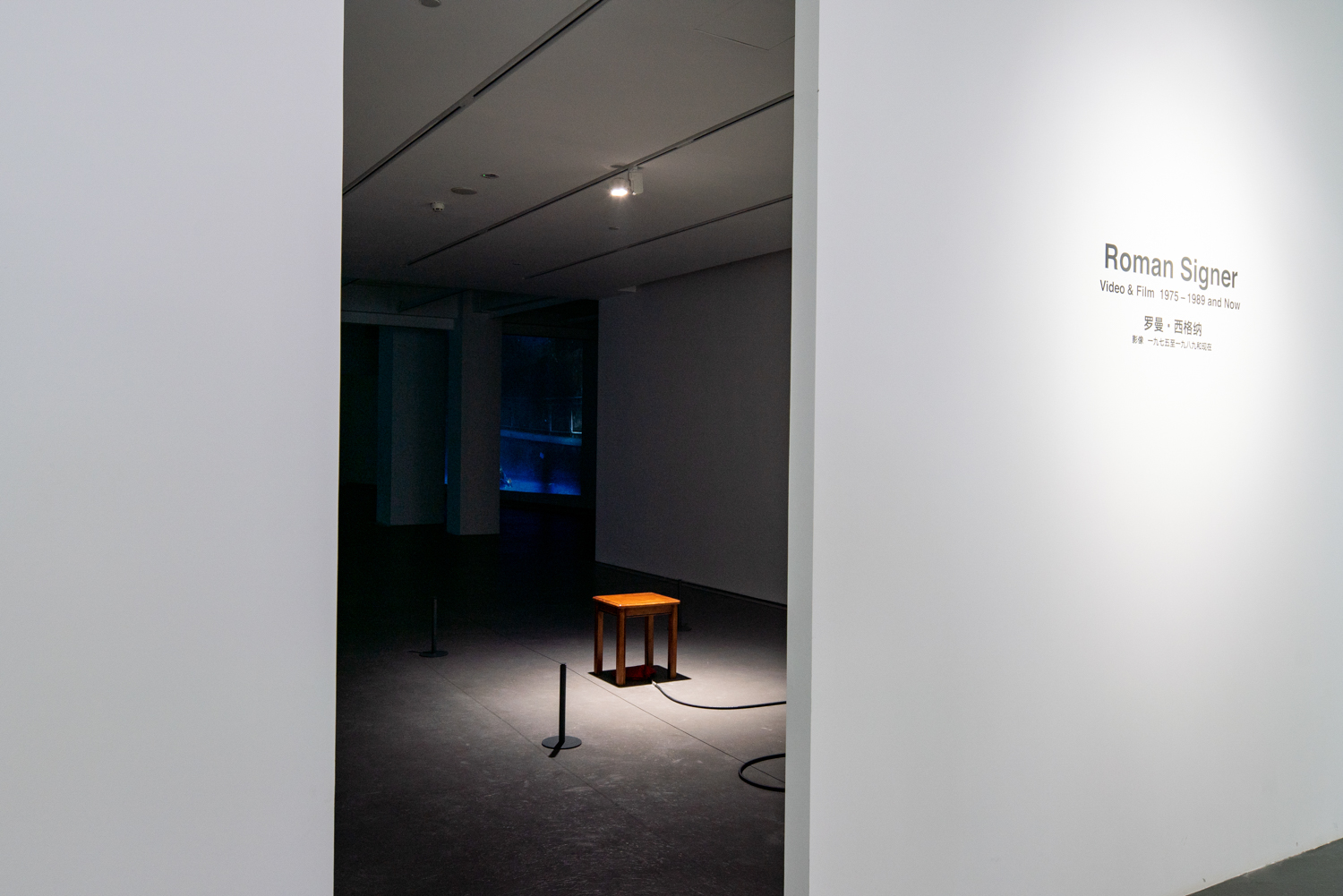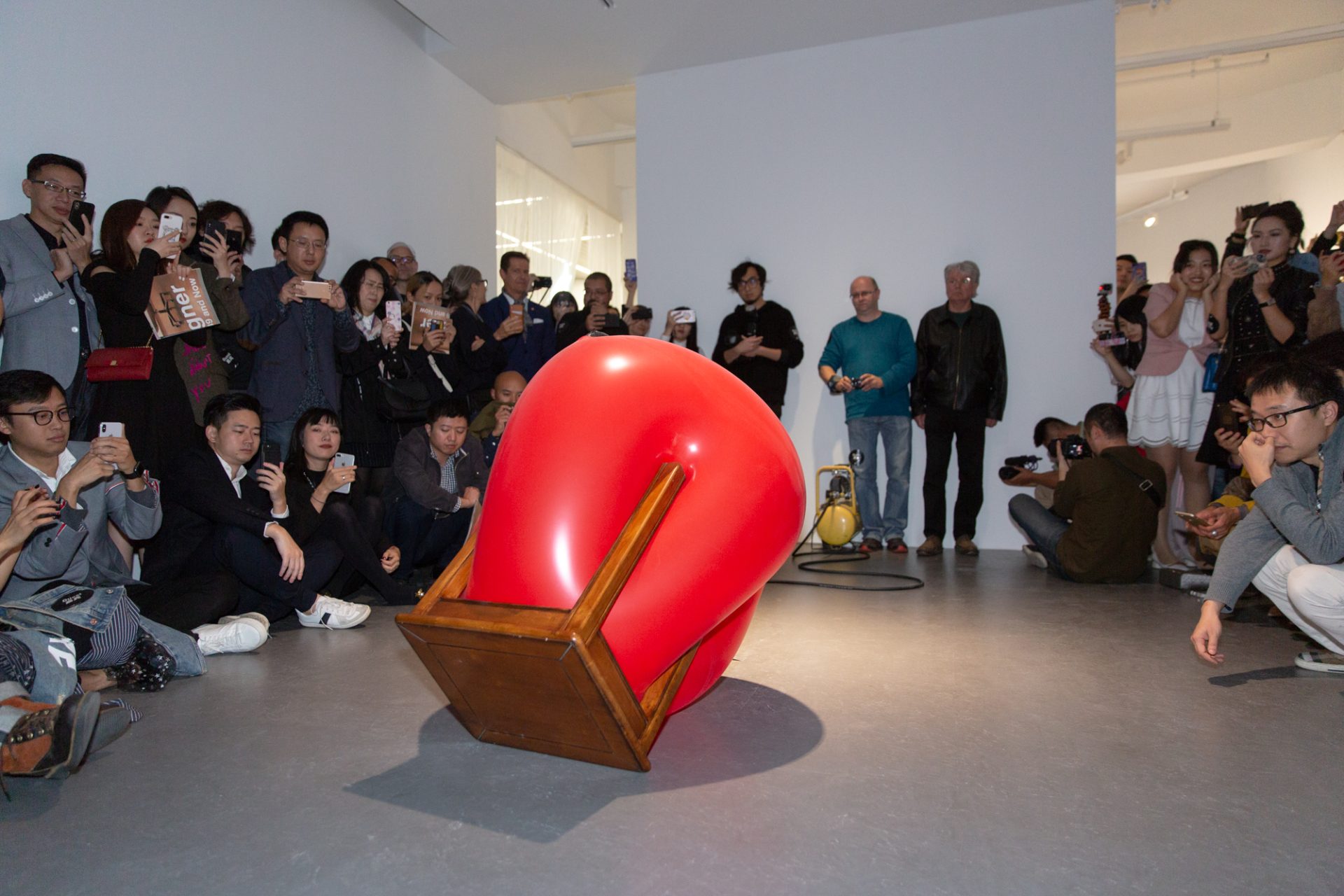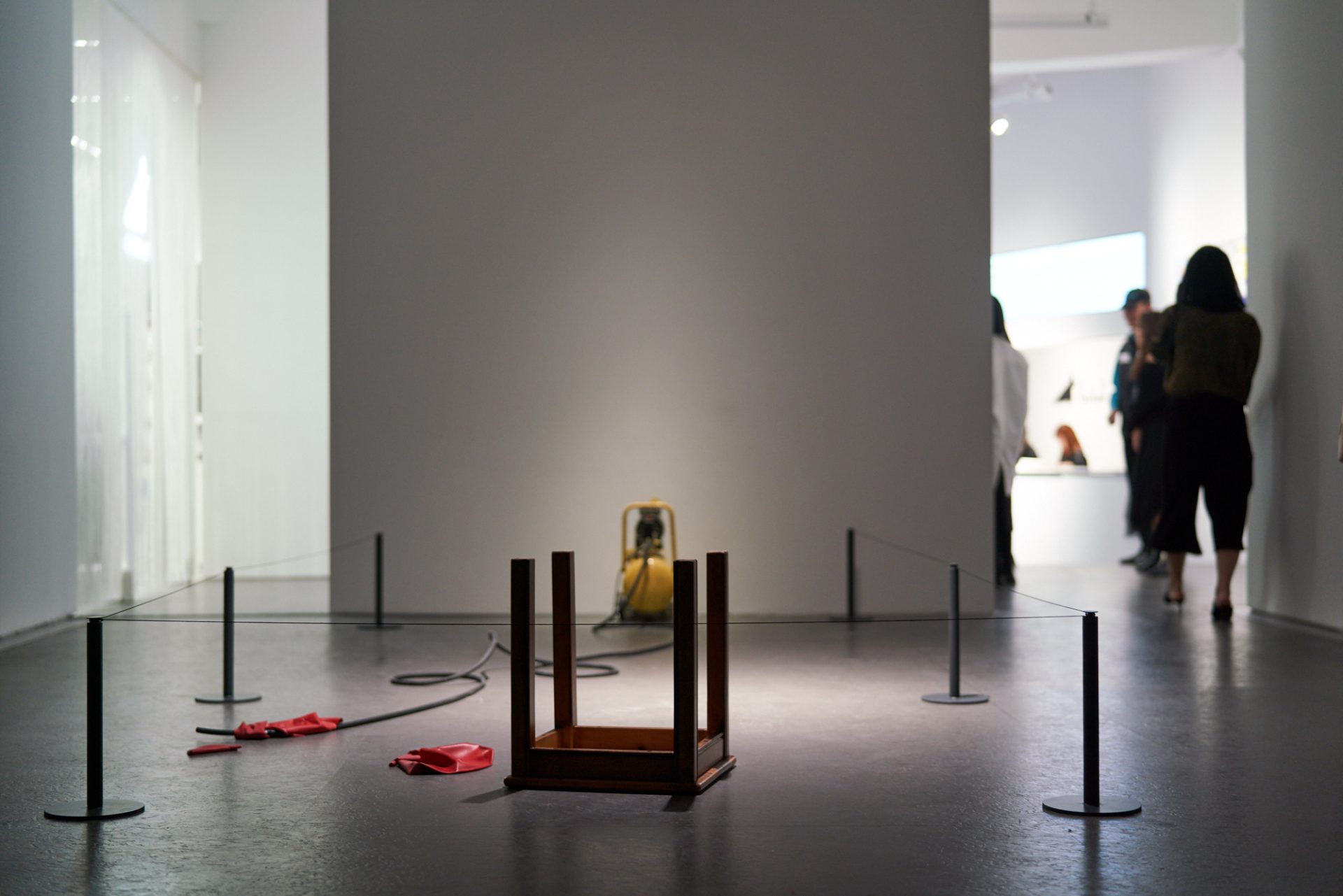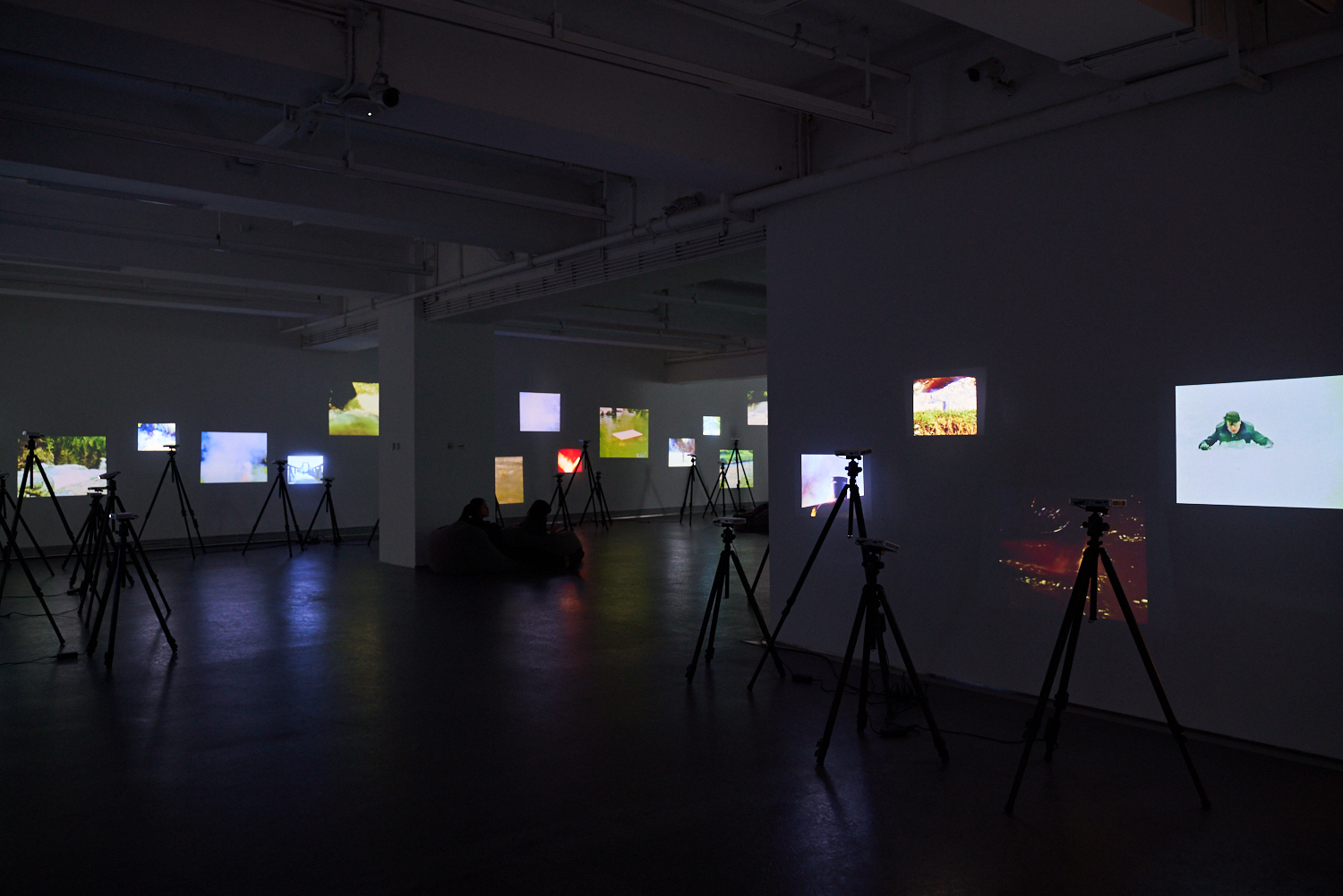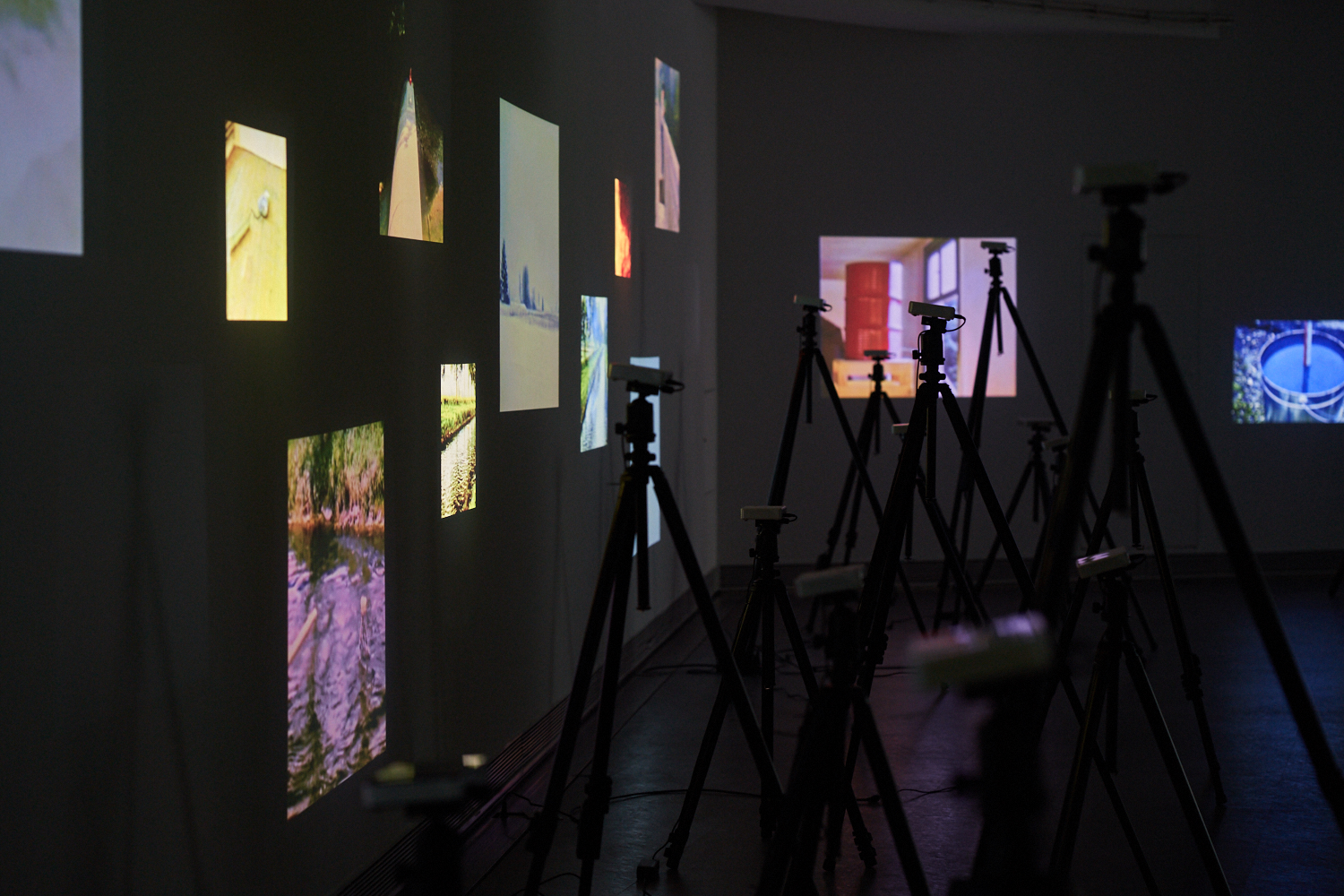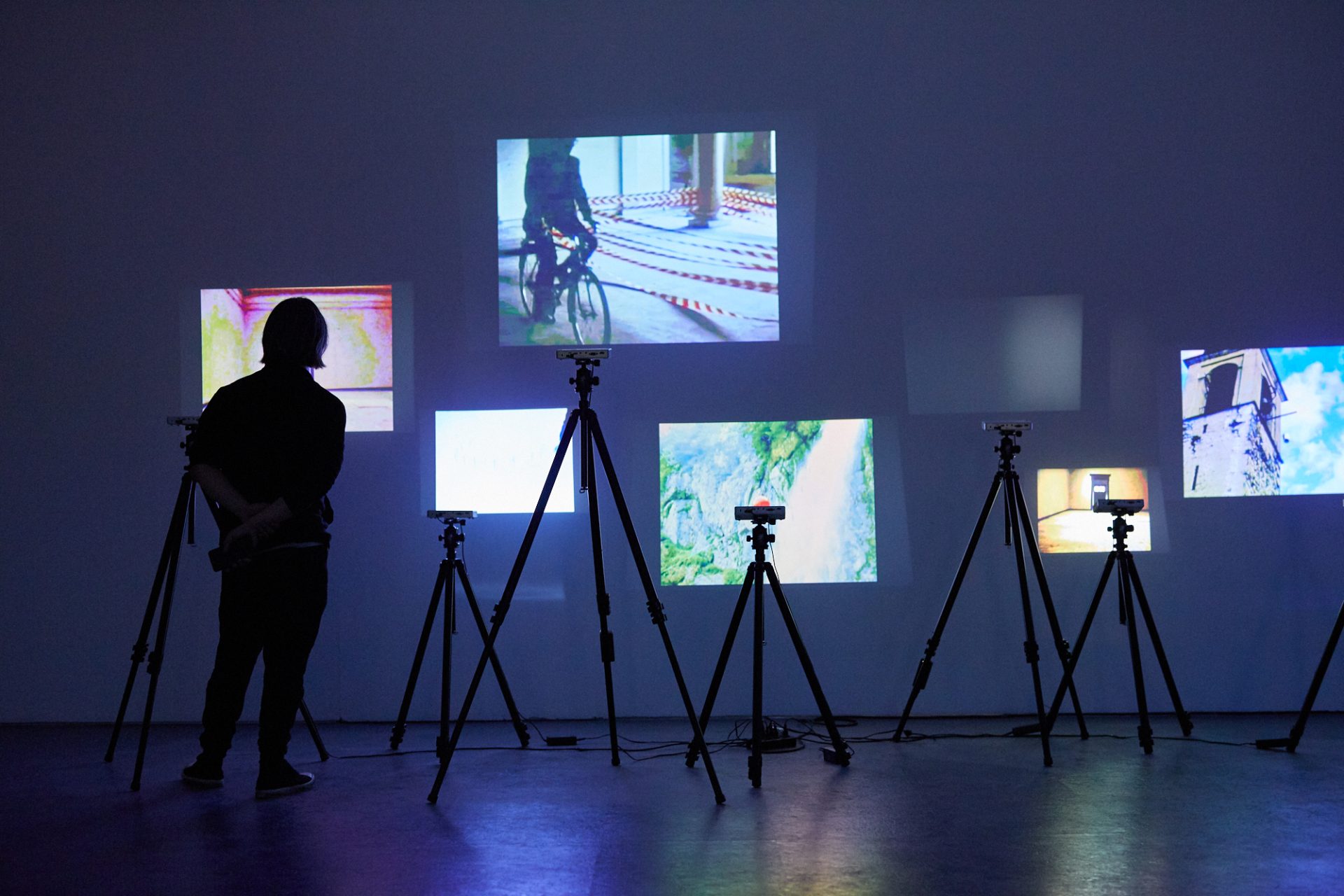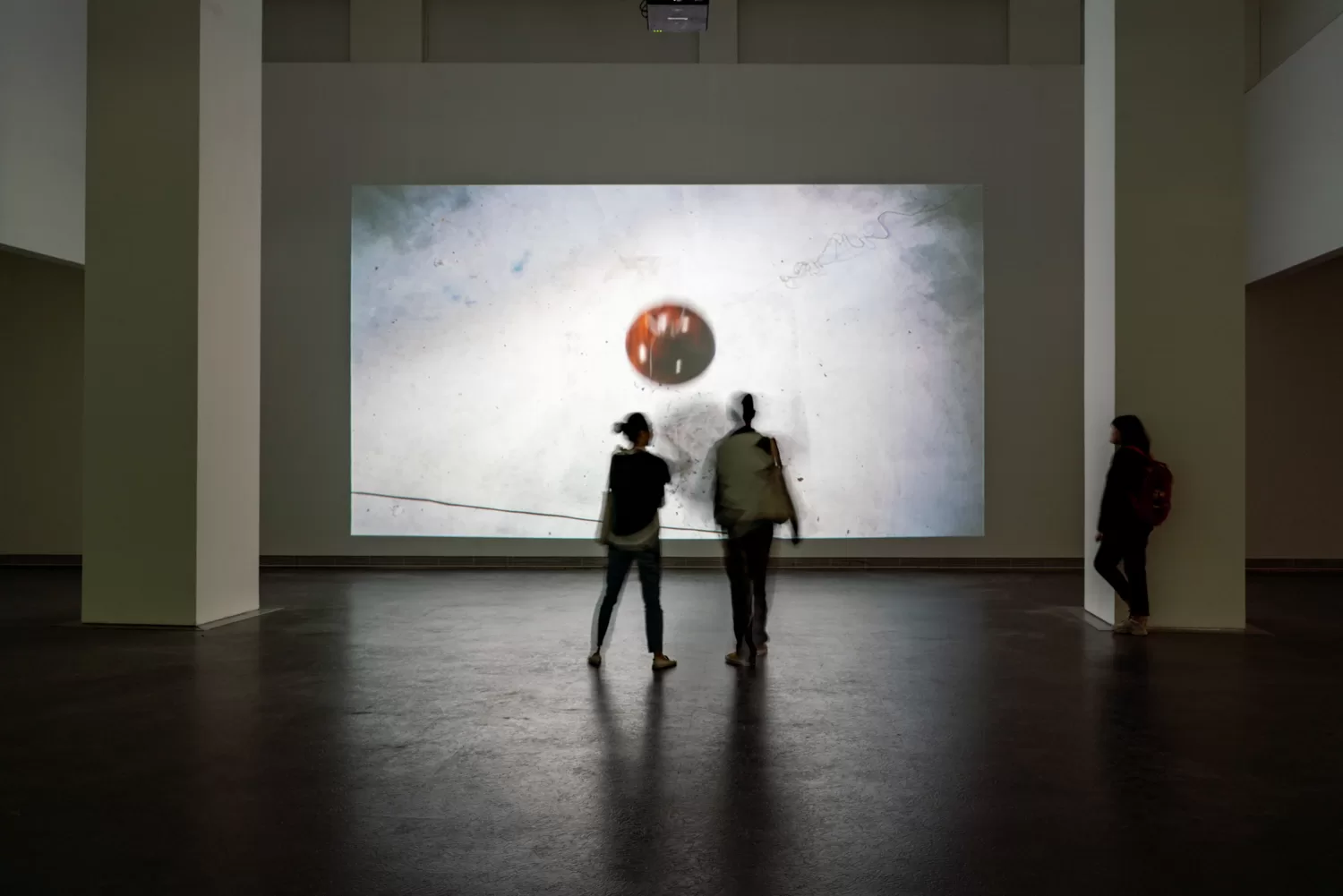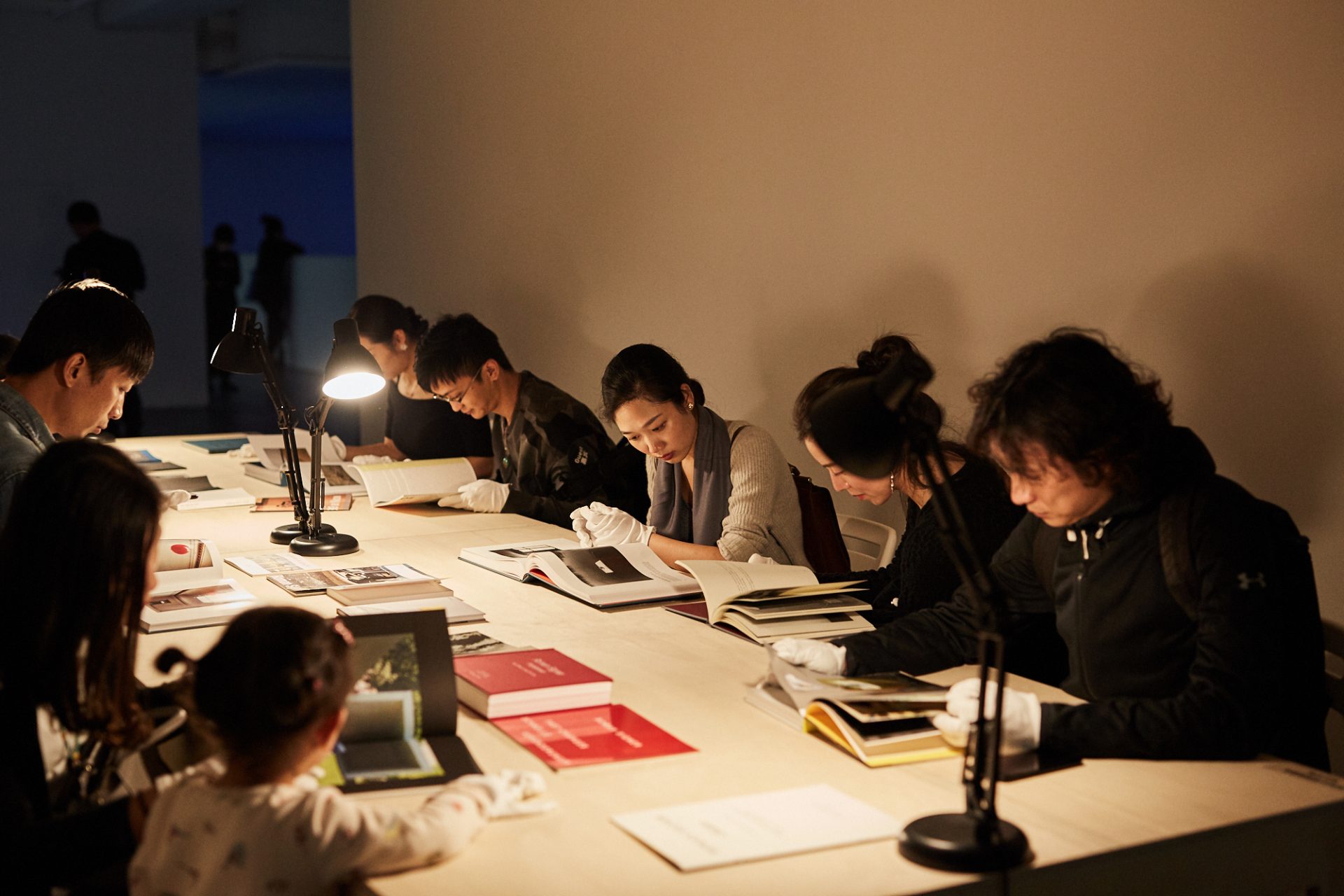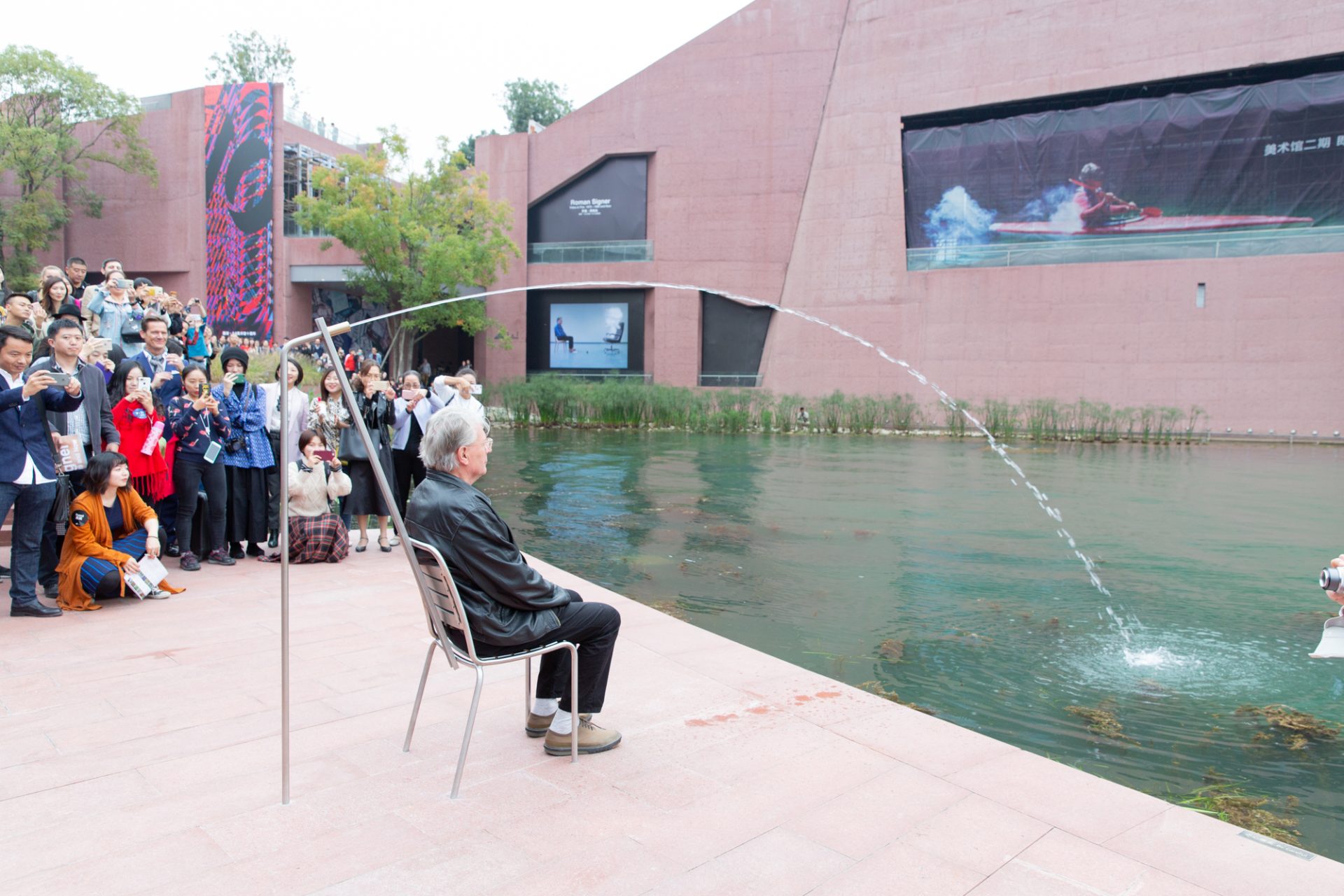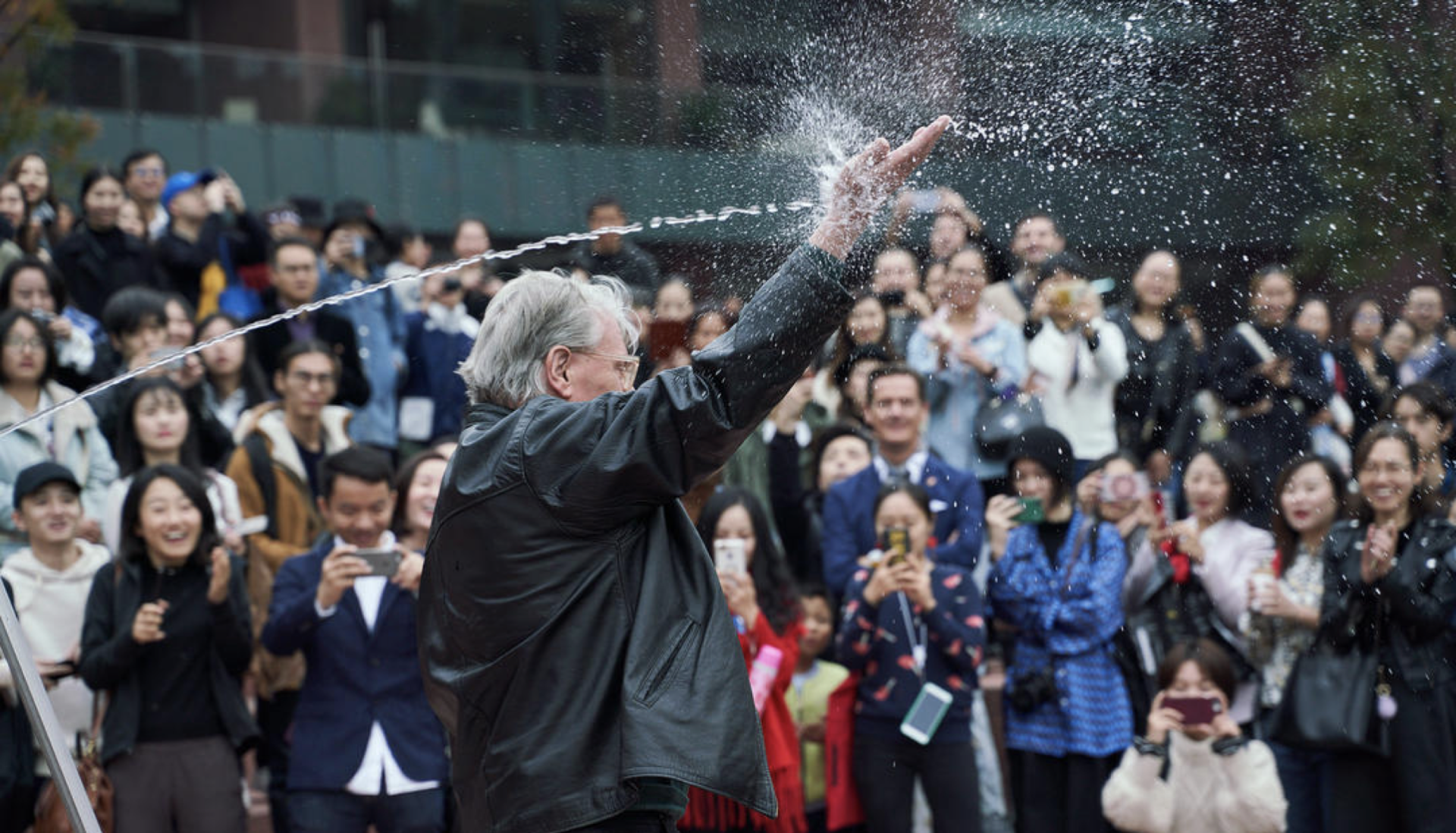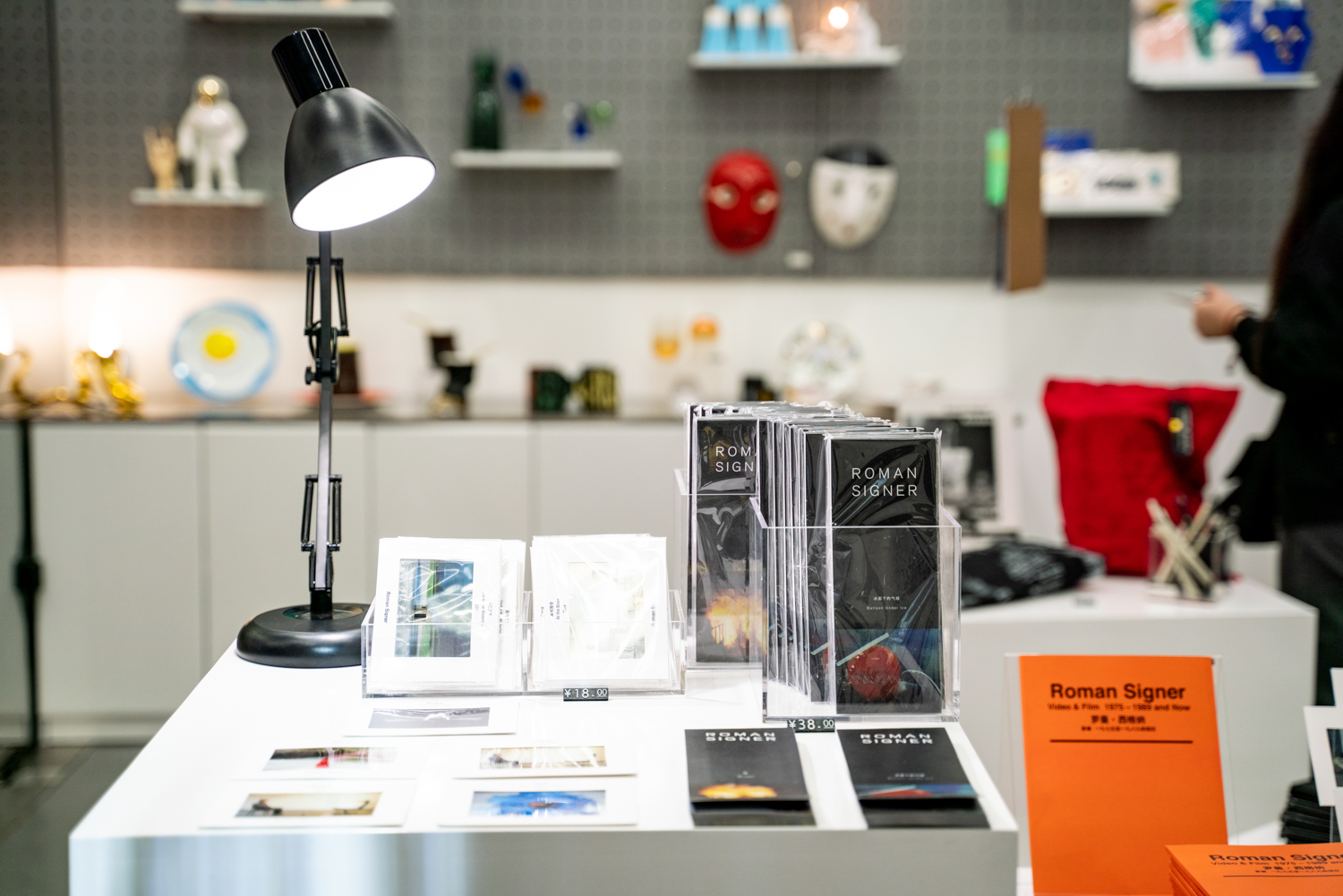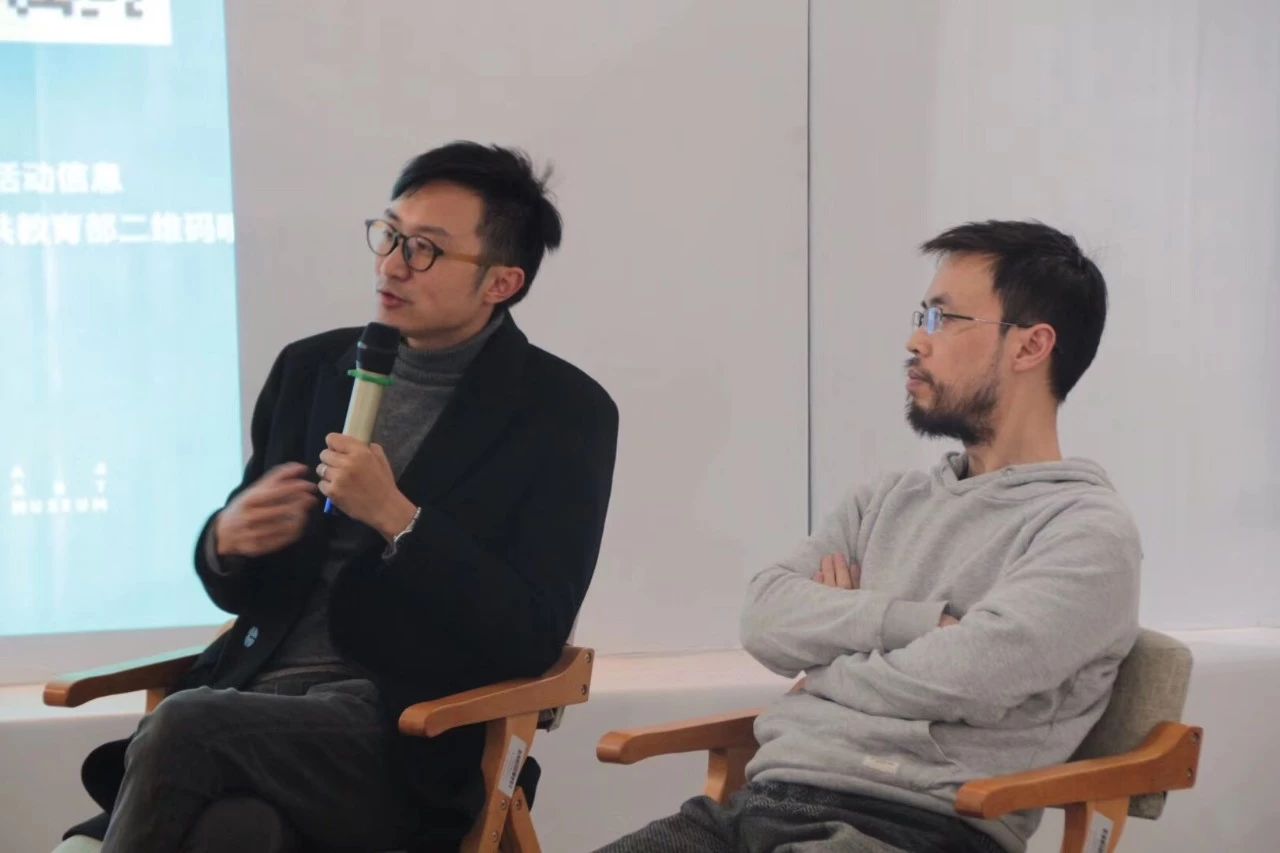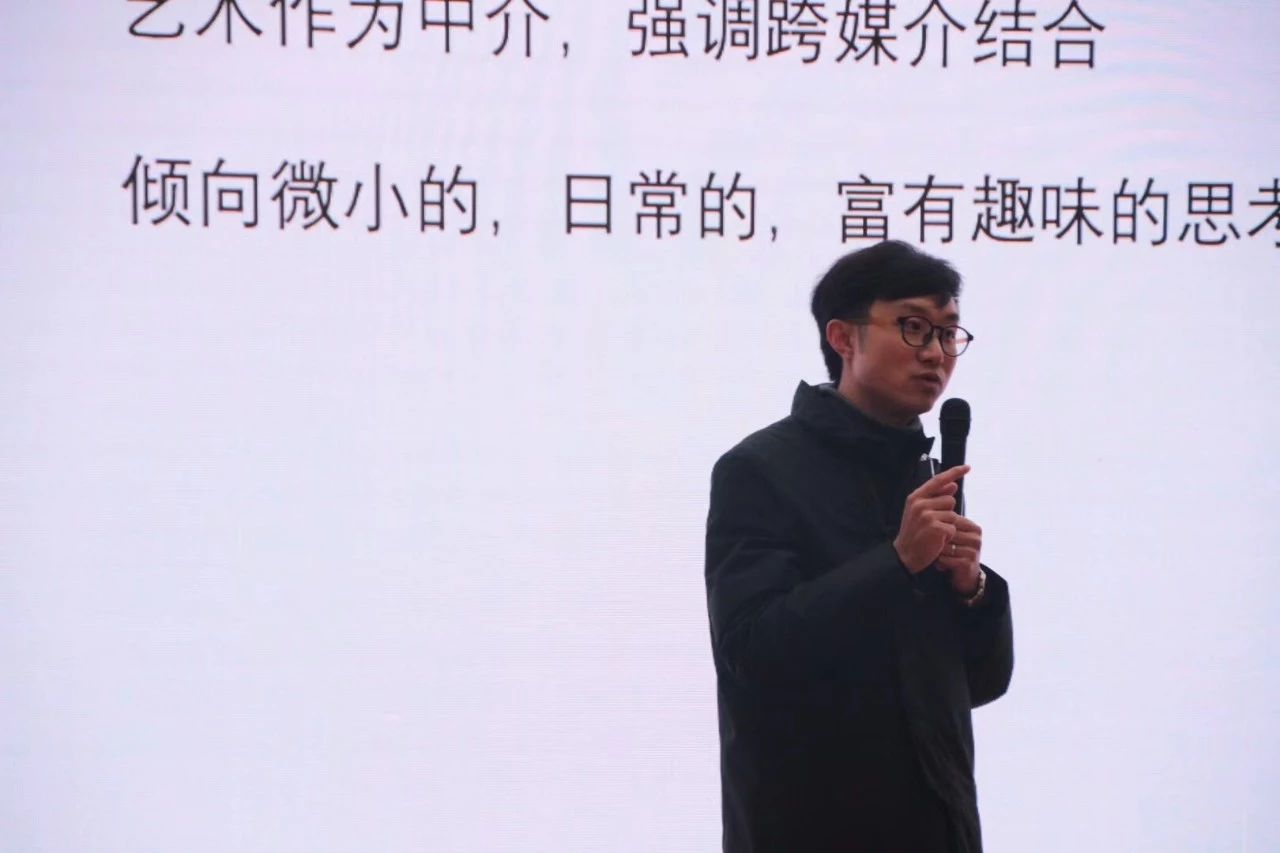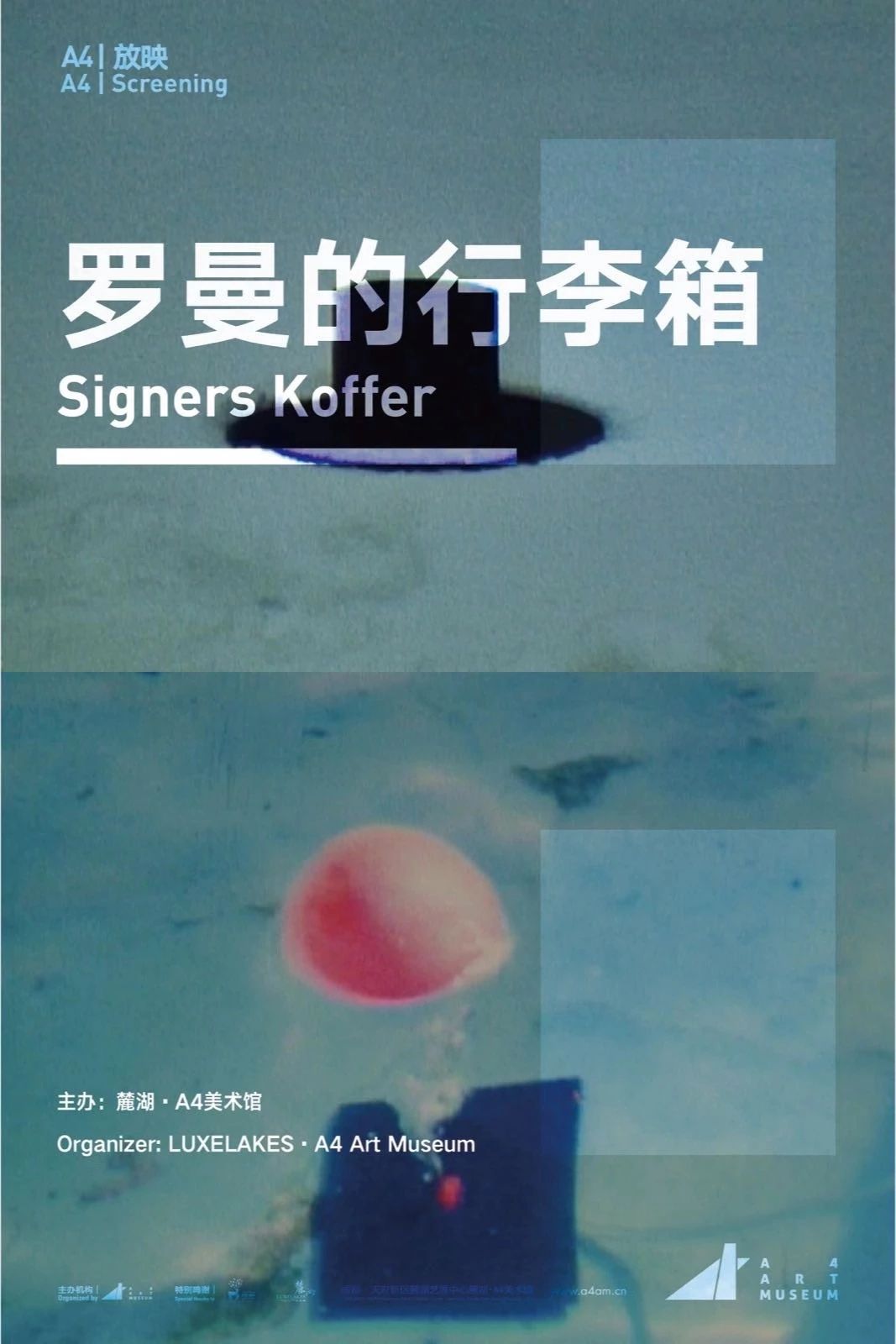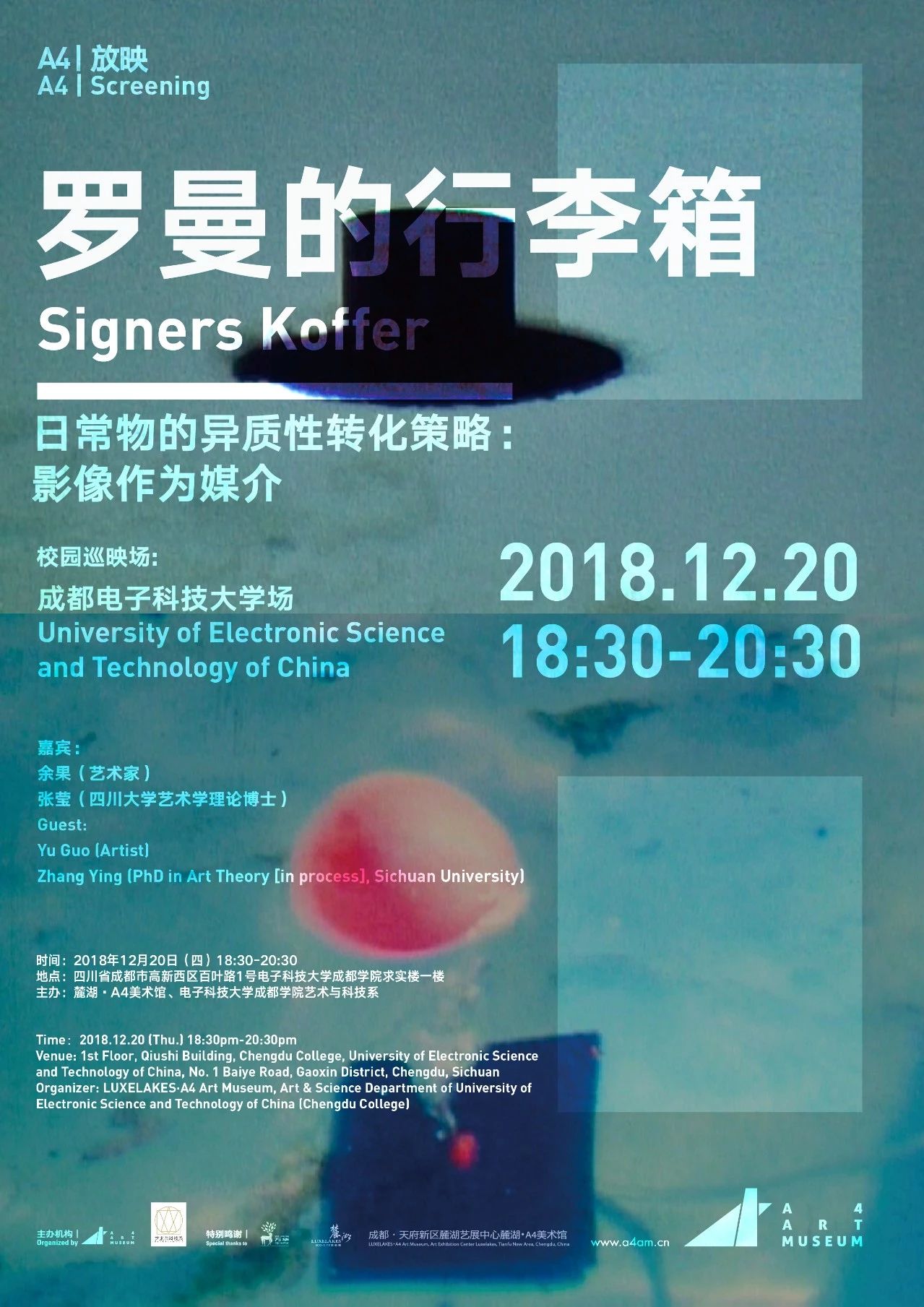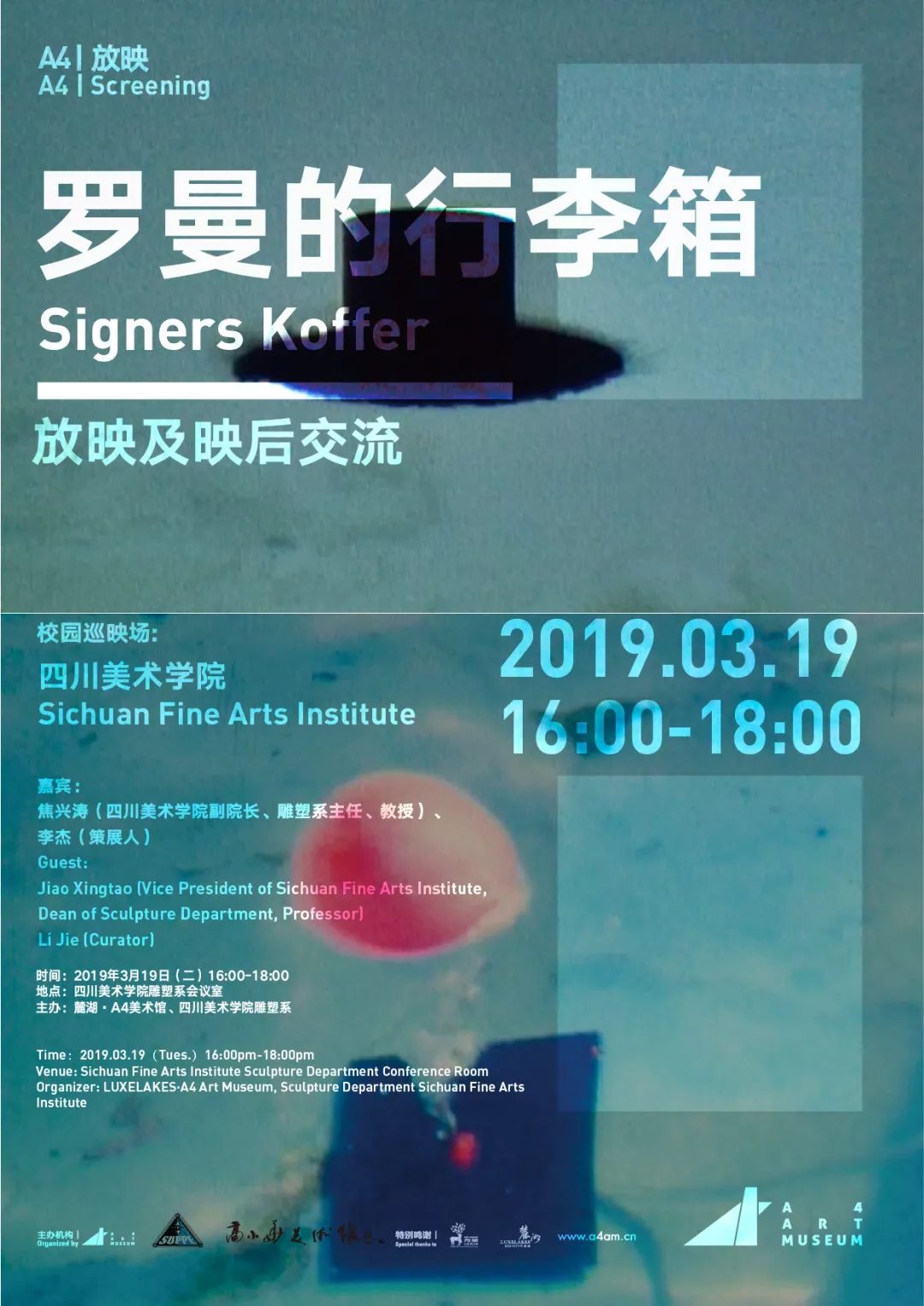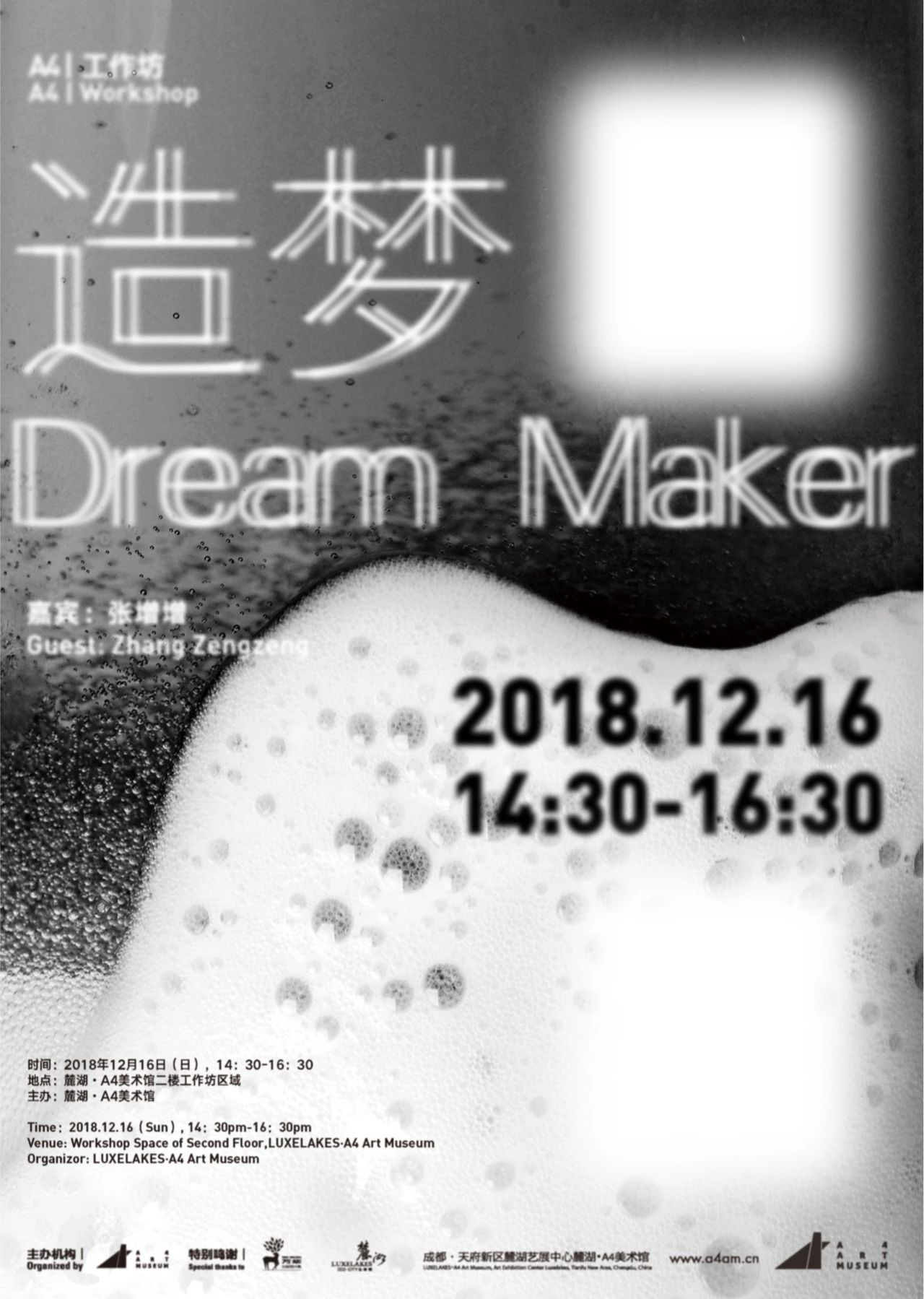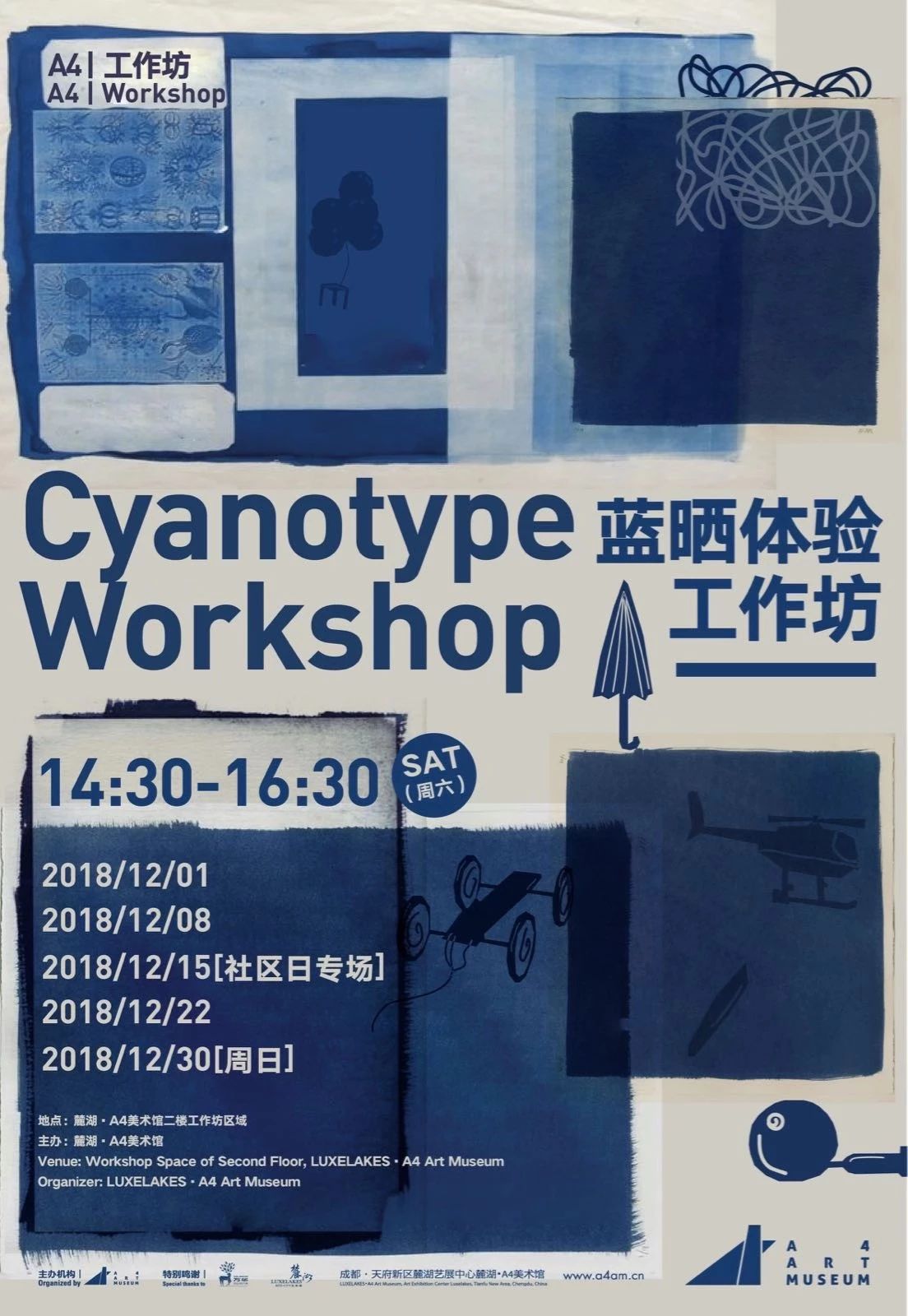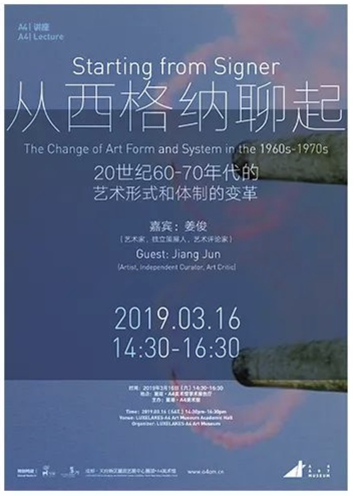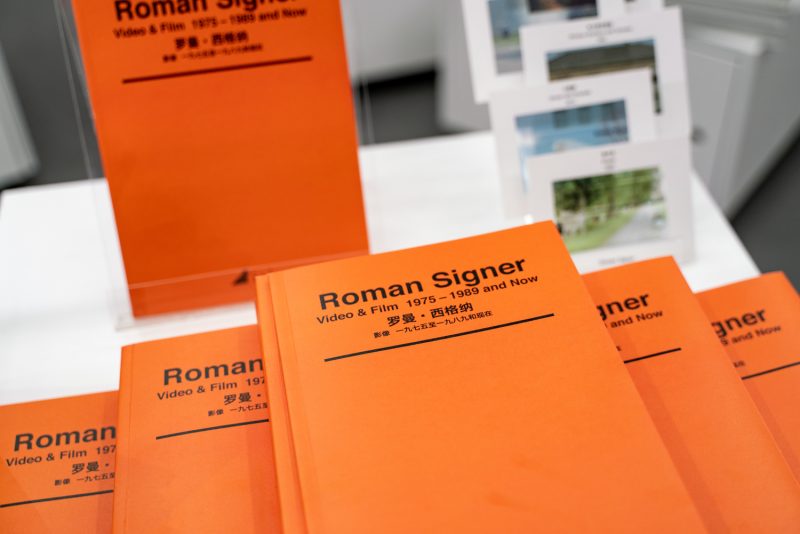Roman Signer: Video & Film
1975-1989 and Now
Li Zhenhua
The work of artist Roman Signer was first introduced to the Chinese art academies towards the end of the 1980s, and quickly achieved wide recognition. Signer’s artworks employ a range of media, including gunpowder, sand, water, and time. At documenta 8 in 1987, his notion of sculpting time reached its peak in the presentation of Action with Sheets of Paper. Since the 1970s and in parallel with such temporal sculptures, Signer’s work has focused on his personal involvement with time and physical movement, on material transformations under pressure, as well as on personal expressions of memory and pain. The image of the kayak in uncommon settings became a recognisable motif in this work, a move that was possibly inspired by a close friend’s death that led to him giving up the sport: the kayak is dragged along the ground, thrown out of a flying jet, and placed in many other equally strange moments and contexts. In other artworks, Signer is also seen slowly riding a bicycle. Perhaps these departures on bicycle and the frequent appearances of the kayak, depict the departure of humans, and the absurdity of objects?
Roman Signer’s work is often presented through video, but also in other forms of documentation. He can be understood as preserving the spirit of early video art, and of Fluxus, and Dada. In addition, having been born in Appenzell and now living in the small Swiss town of St.Gallen, Signer inevitably lives a hermit-like life, with a self-made worldview and value system, and his own artistic techniques that he continues to develop. In 1981, following a current of left-wing romanticism and liberalism, Signer visited China. This trip was frozen in time via a single photograph. When he came to China the second time, in the booming period of China’s new economy and art market, he was already over 70 years old.
Video and film are Signer’s most frequently used artistic media. The period between 1975 and 1989 witnessed the birth and death of a sort of ‘media age’. During this period Signer mainly used a Super 8 (8mm film) camera in his work. The length and quality of the works he produced back then were, in part, related to the specific technological limitations he was subject to, especially in the film technology. Because no sound recording systems were used, Signer’s films empowered themselves with pure silence. Unlike artists who rely too heavily on media techniques, Signer attempts to find a balance between media intervention and naturally occurring events, and to present mundane daily life through extremely simple methods. For instance, most of his works are created without an on site audience: there is only the artist and his camera assistants (usually his brother, his friends, and later on his wife).
Roman Signer’s artistic practice also echoes the left-wing thinking that also led to that visit to China, resulting in the photo taken in Beijing. Today, six international galleries act as agents for his work. However, despite his growing reputation, Signer’s working methods and the forms of media he uses have never changed. He still uses very simple media and materials, staying committed to the pleasure of being fully involved in the process.
This introduction of Signer’s work to China starts with an investigation of his artworks. Through this exhibition, the curatorial team hopes to share with the public Signer’s memories, that were formerly boxed up and preserved in archives and databases. Signer has never been a fan of large-scale events and artworks, and he intentionally avoids talking about himself. Indeed, at documenta 8, when he was very much in the art world limelight, he may have felt the level of attention was too much. Signer is an artist who always contemplates his relation to the world, and who always lives in self-reflection. He existed – in the sense that his artworks and their dimensions are deeply related to the world; yet he never exists – in the sense that part of his artworks are presented in real time in front of an audience. He even deliberately wipes away his own traces, or his artworks’ connections to the world, and stays apart, in an individual state of being. This kind of ‘disconnection’ does not exist as a blunt fracturing from the world. Instead, it is a process of dissolving into daily life. It is clear that Signer’s work has not changed due to shifting politics, economics, or even time. He maintains simple methods of expressing his understanding of the world, re-discovering the world through materialised forms and through experiments with the spiritual and material.
Roman Signer’s first touring exhibition to China is kindly supported by Museum of Contemporary Art of CAA, CAFA Art Museum, Art Museum of GAFA, OCT Art and Design Gallery (Shenzhen), MAN Nuoro Art Museum (Italy), Wti, and Chronus Art Center. Special thanks go to Mr. Yang Jingsong, Mr. Qiu Zhijie, Mr. Wang Huangsheng, Mr. Wang Chunchen, Mr. Hu Bin, Mr. Feng Feng, Mr. Lorenzo Giusti for their curatorial support, and Mr. Zhang Qinghong for his generous support.
The exhibition is also supported by: documenta Archiv Kassel, Helmhaus, Swiss Arts Council, Chronus Art Center, Kunstgiesserei St.Gallen etc. Generous support also comes from Corinne Schatz, David Signer, Karin Stengel, Simon Maurer, Barbara Signer, Michael Bodenmann, Uli Sigg, Josef Felix Müller, Peter Zimmermann, Reto Thüring, Rachel Withers, Max Wechsler, Geneviève Loup, Felix Lehner, and Aline Feichtinger.
Publication and copyright support come from Vexer Verlag, graphic design is provided by Yu Qiongjie with Transwhite Studio, translation and copy-editing is provided by Eva Luedi, Wang Pan, Iris Xinru Long, and Susannah Worth.
On November 3rd, Roman Signer will realize his first work of sculpture to have been produced in China – the result of a commission from Ms. Sunny Sun and LUXELAKES·A4 Art Museum, Chengdu, Sichuan.
The project’s development has been widespread, proceeding via Hangzhou, Beijing, Guangzhou, Shenzhen, Sardegna (Italy), and finally Chengdu, where Signer completes this unique sculptural piece.
Signer’s endeavour begins with the water cycle active around the viewers: reflecting on the ephemeral nature of time, we meet moments of uncertainty, subtlety, dynamics, and humour.
Water from the lake shall return to it, eventually.
*Roman Signer was born in 1938 in the Appenzell, Switzerland – the historic capital of Appenzell District. There are numerous heritage buildings in Appenzell town. The parish church, the 1563 town hall, the Salesis house, the ruins of Castle Clanx and the state archives with the administration building are listed as heritage sites. In 1071 the village was referred to as Abbacella. By 1223 this changed to Abbatiscella.
